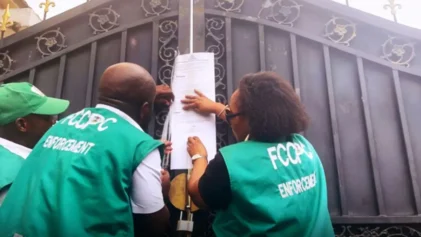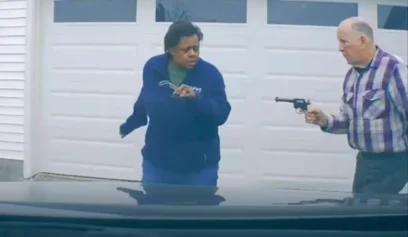In another shocking incident that was caught on video, a northwest Indiana family filed a federal excessive force lawsuit against police in Hammond, Indiana, after the police smashed through the passenger side window and used a Taser on a man in a car containing two children after he was afraid to exit the car during a routine traffic stop.
The video, which has gone viral, shows Jamal Jones repeatedly asking the officers why they need for him to exit the car after they pulled over his girlfriend Lisa Mahone for not wearing her seatbelt on Sept. 25. Mahone’s two children, ages 14 and 7, were in the backseat as Mahone was on her way to the hospital to see her dying mother. Jones asks the officers if they can have their supervisor come to the scene while Mahone is on the phone with 911 complaining about the officers’ behavior.
The scene abruptly turns when the officers suddenly smash in the windows and hit Jones with a Taser, yanking him from the vehicle as the 7-year-old girl screams, according to the video that was released by the family’s attorneys.
The encounter was recorded by Mahone’s 14-year-old son, who was in the backseat with his younger sister. The police also claim they were recording the incident.
The lawsuit accuses the officers of excessive force, false arrest and battery.
The lawsuit claims Jones told police he didn’t have his ID because he had recently been given a traffic ticket. It was when he reached into the backseat to get the ticket that the officers drew their guns. They then refused to take the ticket as a form of ID.
Jones can be seen in the video disobeying the officers’ commands, which the lawsuit claims he did because he feared for his safety due to “the officers’ aggressive demeanor.”
One officer tells Jones if he does not step out of the car, they will “have to open the door for [him].” Jones nods and, after a few moments, one officer breaks the window with a club and uses a Taser on Jones, the video shows. Once they broke the window, used a stun gun and dragged him from the vehicle, they arrested Jones for resisting arrest.
“At no point during this entire encounter did Jamal physically resist the officers in any way,” the lawsuit alleges.
The lawsuit also claims Mahone’s son and daughter were hurt by the shattered glass from the window.
Hammond police issued a two-page statement defending the officers’ actions. The statement by Hammond Police Lt. Richard Hoyda says they “were at all times acting in the interest of officer safety and in accordance with Indiana law.”
“In general, police officers who make legal traffic stops are allowed to ask passengers inside of a stopped vehicle for identification and to request that they exit a stopped vehicle for the officer’s safety without a requirement of reasonable suspicion,” according to a prepared police statement. “When the passenger displayed movements inside of the stopped vehicle that included placing his hand in places where the officer could not see, officers’ concerns for their safety were heightened.”
Atlanta defense attorney Robbin Shipp said the police have a right to ask passengers in a vehicle for ID and to step outside of the vehicle, but it’s rare to see a traffic stop over a seatbelt escalate in such a manner.
“In my experience it’s rare for a seatbelt violation to be an independent reason for stopping a vehicle and it’s extremely rare for it to escalate to this level,” said Shipp, who has written a book on African-Americans and law enforcement called Justice While Black. “The passenger had an obligation to surrender his ID and name when the officers asked. In their statement they say when he reached in the back they were fearful for their safety. I don’t see that on the videotape — which goes to why officers should be equipped with chest cameras. In my imagination, it could be reasonable to reach in the back to soothe the child who was increasingly upset.”



